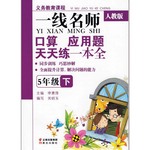题目内容
The Emperor turned In front of the mirror and everyone present praised his clothes .
A.from side to that side;high
B.from side to side;high
C.from the side to another;highly
D.from side to side;highly
D
解析:
from side to side 从一边到另一边;highly高度地,表抽象概念;high高,表具体的高。

 新课标同步训练系列答案
新课标同步训练系列答案 一线名师口算应用题天天练一本全系列答案
一线名师口算应用题天天练一本全系列答案C
Napoleon, as a character in Tolstoy’s War and Peace, is more than once described as having “fat little hands.’’ Nor does he “sit well or firmly on the horse.’’ He is said to be “undersized.’’ with“short legs’’ and a “round stomach”. The issue here is not the accuracy of Tolstoy’s description--it seems not that far off from historical accounts but his choice of facts:other things that could be said of the man are not said. We are meant to understand the difference of a warring commander in the body of a fat little Frenchman. Tolstoy’s Napoleon could be any man wandering in the streets and putting a little of powdered tobacco up his nose—and that is the point.
It is a way the novelist uses to show the moral nature of a character. And it turns out that, as Tolstoy has it, Napoleon is a crazy man. In a scene in Book Three of War and Peace, the wars having reached the critical year of 1812,Napoleon receives a representative from the Tsar(沙皇), who has come with peace terms. Napoleon is very angry:doesn’t he have more army? He, not the Tsar, is the one to make the terms. He will destroy all of Europe if his army is stopped. “That is what you will have gained by engaging me in the war!” he shouts. And then, Tolstoy writes, Napoleon “walked silently several times up and down the room, his fat shoulders moving quickly.’’
Still later, after reviewing his army amid cheering crowds, Napoleon invites the shaken Russian to dinner. “He raised his hand to the Russian’s…face,” Tolstoy writes, and “taking him by the ear pulled it gently….” To have one’s ear pulled by the Emperor was considered the greatest honor and mark of favor at the French court. “Well, well, why don’t you say anything?’’ said he, as if it was ridiculous in his presence to respect any one but himself, Napoleon.
Tolstoy did his research, but the composition is his own.
【小题1】Tolstoy’s description of Napoleon in War and Peace is _________.
| A.far from the historical facts | B.based on the Russian history |
| C.based on his selection of facts | D.not related to historical details |
| A.he thought he should be the one to make the peace terms |
| B.the Tsar's peace terms were hard to accept |
| C.the Russians stopped his military movement |
| D.he didn’t have any more army to fight with |
| A.To walk out of the room in anger. | B.To show agreement with him. |
| C.To say something about the Tsar. | D.To express his admiration. |
| A.ill-mannered in dealing with foreign guests | B.fond of showing off his iron will |
| C.determined in destroying all of Europe | D.crazy for power and respect |
| A.A writer doesn’t have to be faithful to his findings. |
| B.A writer may write about a hero in his own way. |
| C.A writer may not be responsible for what he writes. |
| D.A writer has hardly any freedom to show his feelings. |
February has long been a month of romance. With the sweet smell of roses in the air, romantic films hit cinemas and love stories fill newspapers and magazines.
On the 14th day, it is a custom for a boy to take his girlfriend out to dinner, buy her flowers and chocolates, write poems, sing to her or even spell out her name with rose petals! This is what you see on Valentine’s Day, a day named after Valentine who was a priest in the third century Rome. When the emperor (皇帝) decided that single men could become better soldiers than those with wives, he didn’t allow marriage.
But Valentine continued to perform marriage ceremonies for young lovers in secret. When his actions were discovered, the emperor sentenced him to death. While in prison, it is said that Valentine fell in love with the daughter of his prison guard. Before his death, he wrote her a letter, which he signed “From your Valentine”, an expression that is still in use today. Valentine died for what he believed in and so he was made a Saint (圣徒), as well as becoming one of history’s most romantic characters.
Nowadays, Valentine’s Day is also popular among Chinese young people. Some students are planning to make Valentine’s cards for parents, teachers and friends. Others want to hold parties at which they will exchange small gifts and eat heart-shaped cakes. The idea is to have fun and encourage people to share in the spirit of St. Valentine.
【小题1】Why did the emperor in Rome not allow marriage in his country?
| A.Because there were few women in his country at that time. |
| B.Because he thought men without wives could be better soldiers. |
| C.Because there wasn’t enough food for so many people. |
| D.Because he wanted to control the birth rate. |
| A.he killed one of the soldiers | B.he stole a lot of food |
| C.he didn’t obey the emperor’s order | D.he didn’t want to be a soldier |
| A.students in China send cards to their teachers |
| B.it is a good idea to celebrate Valentine’s Day in China |
| C.it is interesting to celebrate Valentine’s Day in China |
| D.Valentine’s Day is also popular in China now |
| A.Valentine’s Day | B.A Brave Priest |
| C.Valentine’s Day in China | D.A Romantic Man |